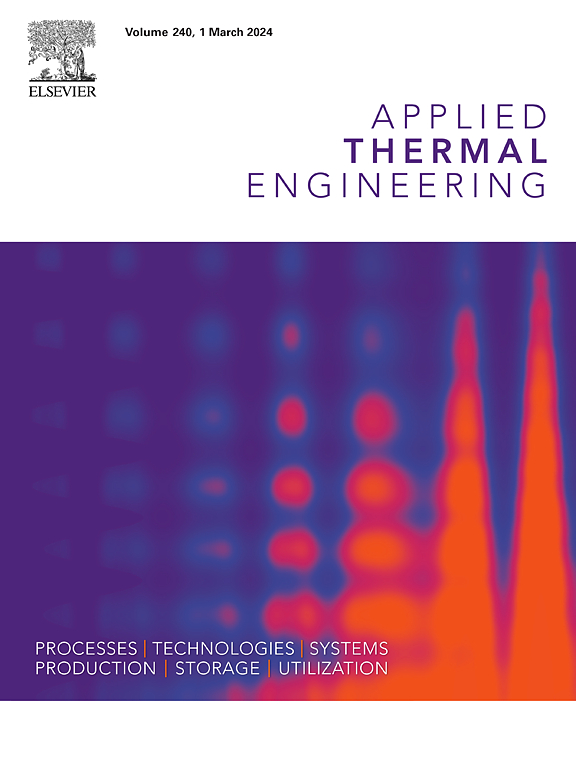非均匀电场作用下肋表面池沸腾传热的数值模拟
IF 6.1
2区 工程技术
Q2 ENERGY & FUELS
引用次数: 0
摘要
沸腾传热已成为大功率电子器件散热的主要方法。然而,高压环境下沸腾的散热机制亟待改进。本文建立了电场、热场和流场耦合的数值计算模型。通过定制电场力方程,采用气液相变Lee模型,在肋面设计了四种不同的电极配置,每种配置产生不同的电场结构。在不同电压差下,四种电极排列方式下肋面沸腾的数值模拟结果表明,肋角处产生了不均匀的电场。在电场的作用下,气泡偏离强场区,向弱场区逸出。这种作用可以在过渡沸腾或膜沸腾阶段破坏汽膜覆盖层,从而增强沸腾换热能力,提高临界热流密度。在U = 25 ~ 75 kV电压差范围内,设计非均匀电场可均匀提高肋面热流密度,同时临界热流密度提高10.9% ~ 35%。本研究为高压、高热功率电子器件新型冷却系统和散热结构的设计提供了理论支持。本文章由计算机程序翻译,如有差异,请以英文原文为准。
Numerical simulation of pool boiling heat transfer on rib surfaces under non-uniform electric field
Boiling heat transfer has become the primary method for dissipating heat from high-power electronic devices. However, the heat dissipation mechanism of boiling in high-voltage environments urgently needs improvement. In this study, a numerical calculation model coupling electrical, thermal, and fluid fields was established. By customizing the electric field force equation and employing the vapor–liquid phase change Lee model, four different electrode configurations were designed on the rib surface, each generating a distinct electric field structure. Numerical simulations of boiling on rib surfaces with the four electrode arrangements under various voltage differences revealed that non-uniform electric fields are generated at the rib corners. Bubbles were observed to deviate from the strong field region and escape to the weak field region under the influence of the electric field. This effect can disrupt the vapor film covering layer during the transition boiling or film boiling stages, thereby enhancing the boiling heat transfer capability and increasing the critical heat flux. Within the voltage difference range of U = 25 ∼ 75 kV, designing non-uniform electric fields could uniformly increase the heat flux density on the rib surface, while also enhancing the critical heat flux by 10.9 % to 35 %. This study provides theoretical support for the design of novel cooling systems and heat dissipation structures for high-voltage, high thermal power electronic devices.
求助全文
通过发布文献求助,成功后即可免费获取论文全文。
去求助
来源期刊

Applied Thermal Engineering
工程技术-工程:机械
CiteScore
11.30
自引率
15.60%
发文量
1474
审稿时长
57 days
期刊介绍:
Applied Thermal Engineering disseminates novel research related to the design, development and demonstration of components, devices, equipment, technologies and systems involving thermal processes for the production, storage, utilization and conservation of energy, with a focus on engineering application.
The journal publishes high-quality and high-impact Original Research Articles, Review Articles, Short Communications and Letters to the Editor on cutting-edge innovations in research, and recent advances or issues of interest to the thermal engineering community.
 求助内容:
求助内容: 应助结果提醒方式:
应助结果提醒方式:


